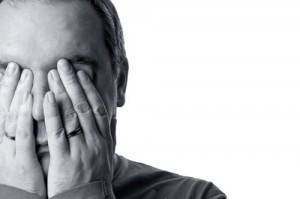
More evidence that low-calorie sweeteners are bad for your health
Studies show that artificial sweeteners can raise the risk of hypertension, metabolic syndrome, type 2 diabetes and heart disease, including stroke.

Natural Health News — More than half of men diagnosed with cancer in Australia are turning to complementary and alternative medicine to help find a cure, or to improve their health, according to new research from the University of Adelaide.
The study, published recently in the Annals of Oncology, is based on an Adelaide questionnaire of 400 men with various types of cancer.
Its findings provide evidence that the use of complementary and alternative medicine (CAM) is common and widespread in men with cancer, many of whom choose to modify their diet in conjunction with conventional treatment, as well as turn to meditation, yoga, and exercise.
“Many complementary therapies have the potential to help reduce common side-effects of cancer treatment and disease symptoms,” said author Nadja Klafke.
“The popularity of CAM use in cancer sufferers presumably reflects the benefits – real or perceived – by those who use them,” she said.
According to Klafke, published data shows that acupuncture and acupressure may relieve chemotherapy-induced nausea and vomiting, hypnosis and massage are beneficial for cancer-related pain, and meditation and relaxation techniques can relieve fatigue.
The study found that dietary supplements are the most common natural therapy used by men suffering from cancer. Prayer is the second most popular, with herbs and botanicals ranking third, despite some clinicians’ concerns (not always well founded) that herbs such as Echinacea, St John’s wort, Ginseng, and Gingko biloba could react badly with prescribed medications.
Looking for better care
Reasons for turning to alternative options include dissatisfaction with conventional medical treatments, or pressure from a spouse or family to try something different, the study found.
While this study focused on male cancer outpatients living in Adelaide, other studies around the world have demonstrated that CAM therapies continue to be a popular choicoei for cancer patients. A 2001 European study found that on average 36% or sufferers used some form of CAM. The figure varied enormously from country to country ranging from 14.8% to 73.1%).
Another 2010 study at the University of Exeter, UK, found that for many patients, using complementary treatments after a diagnosis of cancer is a positive experience that allows them to gain a sense of increased control in theri own lives as well as a sense of connection and improved communication with their caregivers in addition to symptom relief and improved wellbeing.
Klafke says her findings show that oncologists are not aware that most male cancer patients use alternative treatments in conjunction with conventional medicine.
“It would definitely be worth clinicians having an open discussion with their patients about the efficacy and safety of complementary and alternative medicine. A better understanding of the role, reasons for use and benefits of CAM may lead to more holistic approaches to care,” she said.

Please subscribe me to your newsletter mailing list. I have read the
privacy statement